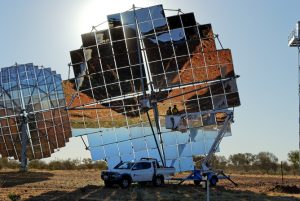by Anthony Vassallo
The recent review of the Australian Renewable Energy Target has once again raised the issue of the “unreliability” of some renewable power sources such as wind and solar power.
Their variability, which arises from the weather or daily and seasonal cycles, leads some to conclude that they will only ever be able to supply a minority fraction of Australia’s electricity.
But for the most part we have the technology available to ensure a steady supply of power, and where we don’t, technology is rapidly advancing.
South Australia is at the forefront of integrating renewables into the existing grid. With more installed wind than any other state (almost 1,500 megawatts), wind now provides on average 25% of its annual electricity production. On recent occasions it provided 100% of the state’s needs and even exported 487 megawatts of power in June this year.
Why electricity is like driving a car
All electricity grids that use alternating current (and that is almost universal) require that the power generated exactly meets the power needed.
An analogy is driving your car. On a road, a constant speed is achieved using a constant throttle — if you start to drive up a hill and you want to keep the speed constant, then you need to increase the throttle otherwise the car will slow down, and as you go over the crest and down the other side the throttle needs to be released otherwise your speed will increase.
The same thing is required in electricity grids, except the need to keep the “speed” constant is much more critical. If extra generation is present because of greater wind speed or more sunshine, then less power from other sources is usually required.
On the surface, this might appear to be a significant barrier to continued strong growth in PV and wind in Australia. Our national electricity grid (mostly on the eastern and southern states) is the result of decades of growth, largely built on legacy operation — large, remote, baseload coal power plants that need to operate continuously.
This resulted in the three tier generation comprising baseload, intermediate and peaking.
Baseload is the term used to describe the large coal-fired power plants that were designed to provide cheap, continuous power. In fact because of their size and design it was not feasible to greatly reduce their output overnight, so it was necessary to provide an incentive to consumers to use power at night to keep them running efficiently.
This was the “off-peak” hot water and other time independent loads that were encouraged through very low tariffs. Aluminium smelters for example, were able to negotiate very low tariffs by providing a reliable “baseload”. The recent closure of some of these smelters is a significant issue for some baseload generators.
For the full article please visit: https://theconversation.com/how-to-get-renewable-energy-into-the-grid-without-losing-power-30961


